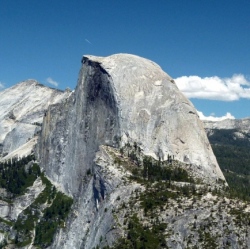
With each industrial revolution mankind, has progressed by leaps and bounds. But that progress has also damaged our environment. Today, climate change, loss of biodiversity, water woes, and food sustainability are among the most pressing global issues.
However, the advent of the Fourth Industrial Revolution is set to fundamentally change such trends. Characterized by advanced technologies such as Artificial Intelligence (AI), big data, automation, and quantum computing, the Fourth Industrial Revolution has the potential to heal the past and ensure a better future.
We take a look at how Microsoft Corporation (MSFT) is applying AI to combat environment issues, particularly climate change.
The Climate Change Challenge
“Greenhouse gases from human activities are the most significant driver of observed climate change since the mid-20th century,” observes the U.S. Environmental Protection Agency.
“The global surface temperature has been rising drastically in recent years; 17 of the 18 warmest years in the 136-year record have all occurred since 2001, with the exception of 1998,” according to NASA/GISS.
The rising temperatures are contributing to rising global sea levels, and at increasing rates especially in recent decades. It is estimated that more than 90% of the increased atmospheric heat is being absorbed by the oceans. It is further estimated that “sea level continues to rise at a rate of about one-eighth of an inch per year.”
Rising sea levels are instrumental in causing flooding, shoreline erosion, and sea-storms, threatening human life. In the U.S., 40% of its population lives in relatively ‘high-population-density’ coastal areas while, “Globally, of the ten largest megacities in the world eight are located by the coast,” according to the U.N. Atlas of the Oceans.
Microsoft’s Initiatives & Progress
AI and machine learning have the potential to help solve many issues resulting in climate change through efforts in key areas that leverage the power of AI. Such areas include the development of clean power, smart-transportation, cities and homes, sustainable production as well as sustainable land-use. These segments can contribute positively towards climate change. Here’s a few of the things Microsoft is doing:
Smart Grid
“Think of the Smart Grid as the internet brought to our electric system,” says the U.S. Department of Energy, “Like the Internet, the Smart Grid will consist of controls, computers, automation, and new technologies and equipment working together, but in this case, these technologies will work with the electrical grid to respond digitally to our quickly changing electric demand.”
In Norway, Microsoft’s is working with Agder Energi and Powel AS to create a more effective, flexible and autonomous grid, which will enable energy saving and easier integration of renewable energy to grid mix. By leveraging AI, the partnership is working to replace the regular overtaxed ‘grids’ with ‘smart grids.’
Power
In Singapore, AI and cloud technologies are being used to improve the electrical efficiency of buildings by centralizing these operations on cloud. JTC is one such example. The company is using data collected by sensors and analytics to monitor and optimize the electrical operations across 39 of its buildings. “Using sensor data and analytics, JTC can now identity and rectify faults before breakdowns occur, resulting in a 15% drop in energy cost avoidance in the first three buildings,” as per the initial reports.
Irrigation & Farming
In the area of irrigation, Schneider Electric is using a tool—SCADAfarm developed by WaterForce on Microsoft’s Azure IoT platform. The tool enabled Blackburn to remotely monitor, manage and analyze water usage which resulted in a 30% decrease in water consumption and a 50% increase in energy efficiency on the area of operation.
Further, traditional farming methodologies are not able to account for changing climate conditions and rising demand. This is where AI-powered tools have to potential to make a difference.
In 2016, Microsoft partnered with International Crops Research Institute for the Semi-Arid Tropics (ICRISAT) using machine learning to launch a sowing application for farmers in the Indian state of Andhra Pradesh. The results of the pilot project showed a 30% higher average in yield per hectare. Farmers received text messages on sowing advisories, such as the sowing date, land preparation, soil test-based fertilizer application.
In another project, The Yield, powered by Azure, and machine learning applications are providing on-farm sensors and intelligent digital solutions to help farmers know when to plant, irrigate, feed, protect, and harvest their crops.
Transportation & Others
Additionally, Microsoft is engaged in projects related to smart transportation systems that will lower fuel emissions, among other benefits.
Although Microsoft had been working on projects related to environment for some time, it gave those initiatives a formal structure in July 2017 by announcing its program, dubbed as AI for Earth, aimed at applying AI to four environmental risk areas, climate change, agriculture, biodiversity and water. In December 2017, Microsoft committed to $50 million over the next five years for the cause.
